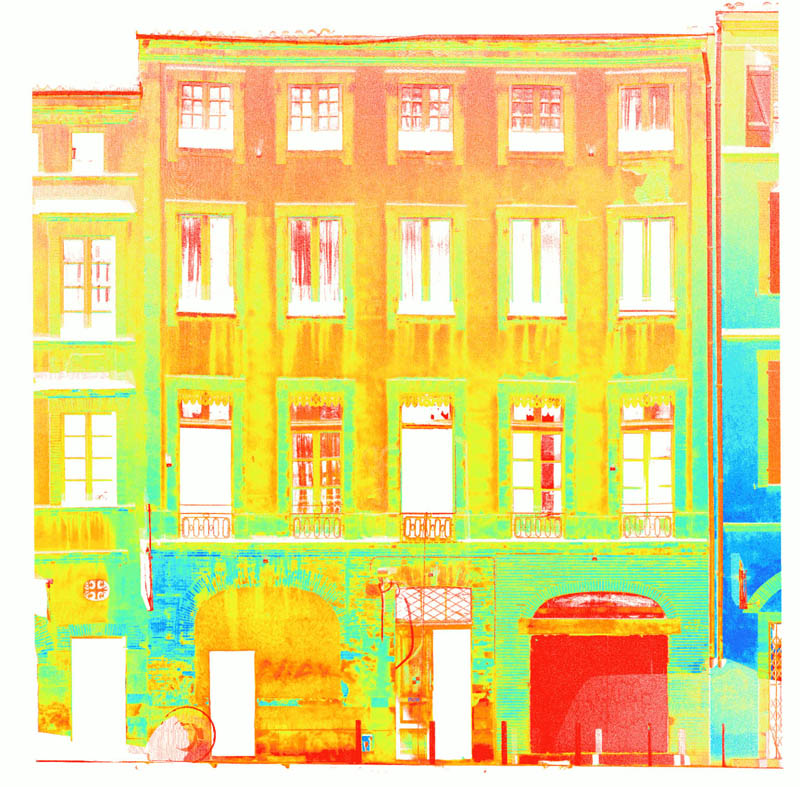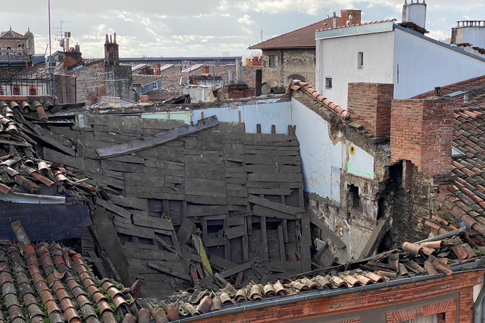Challenge
On a November Friday, emergency services were called to the Rue Cujas in the historic centre of Toulouse where the roof of an unoccupied three-storey building had collapsed.
The street was closed immediately. Sixty firefighters secured the area and searched for possible trapped victims with the help of trained dogs. Before the end of the day the Municipality of Toulouse had banned occupation of 28 nearby buildings due to the risk of further collapse.
Once the emergency team had confirmed there were no casualties, engineering specialists took over to assess the structural risks for the house and those around it.
There was concern that the whole building could collapse and an urgent need for early warning of any movement in order to make the area safe. A monitoring solution was called for that could be installed quickly in this unstable environment and be effective in the narrow streets.
Solution
Within 24 hours, survey experts Topographie 47 and Senceive distributor Geomesure had installed a high frequency remote condition monitoring system.
The solution combined:
- Absolute baseline data from 3D laser scan

- Façade rotation detection using the FM3N-IX FlatMesh 3 Triaxial Tilt Sensor Node.
- Convergence measurements of the façade and interior using the FM3N-LDS-IX FlatMesh 3 Optical Displacement Node with Triaxial Tilt Sensor.
Outcome
The monitoring programme provided the insight needed to make the area safe and allow local people back into their homes.
Whereas other solutions could have required lengthy setup and many people on site, our instrumentation was available locally and arrived ready to use. Senceive turnkey technology is ideal for projects like this because it can be installed by non-specialists and configures itself automatically.
The collaborative approach combined geomatic and remote sensor technologies to deliver an integrated picture of the structure and pinpoint ongoing movement. That picture was continuously updated thanks to the high frequency capability of the Senceive Flatmesh network – with readings potentially available at 1 second intervals.
The team were praised for their rapid response and expertise.

